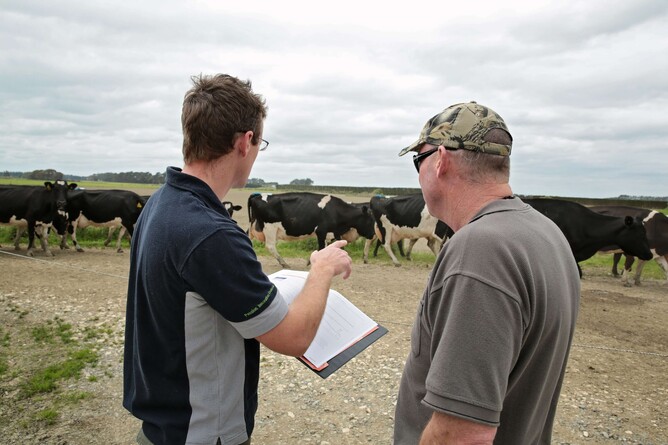The best time to perform a locomotion score is six to eight weeks after mating has started as lameness has the biggest impact at that time of the season.
Have you ever had a locomotion score performed on your herd? Not sure what they are for or what to do with the information after you’ve received the results? Let’s explore the value of locomotion scoring.
Lame cows cost a farm business from the reduced production, impaired reproductive performance and being susceptible to premature culling. The rough figures estimate a case of lameness costs the business $250, which equates to almost $15,000 for the average 419 cow herd with an average of 14% incidence.
Lame numbers
From the 2020/21 season data within WelFarm, it shows an average of 4% of cows were scored 2 or 3 at their locomotion scores performed in early lactation. These are cows that are in the main herd and not previously identified. This means that 4% were picked up and treated sooner before the lameness escalated and they cost the business significant time and money.
Farmers find it frustrating and time consuming to manage lame cows and it poses significant public perception risks, as well as being considered a serious animal welfare problem. There are two elements to tackle when managing lameness in a herd; treating affected cows and reducing the incidence and risk.
When a locomotion score is performed it can be used to assess if there are lame cows that need treating. It also shows if there are cows developing lameness that need observing and may need their feet lifted to check. It also shows what the incidence of lameness is looking like and whether there is a need to review herd management.
Locomotion scoring
A simple system of scoring cows from 0 through to 3, where 0 is normal with good mobility, and 3 is severely lame. Once each cow has been scored, a plan of attack for treating lame cows can be implemented.
Score 0 cows are not lame with a normal gait.
Score 1 cows are slightly lame. They walk unevenly but it can be hard to identify the lame leg. These cows need careful monitoring to ensure lameness does not develop further, and may benefit from having the feet lifted and checked.
Score 2 cows are moderately lame. It is possible to identify the lame leg and they should be drafted, examined and treated as soon as practical.
Score 3 cows are severely lame and should be drafted, examined and treated within 24 hours. They may require a vet. Lame cows should not be made to walk far and should be kept on pasture.

